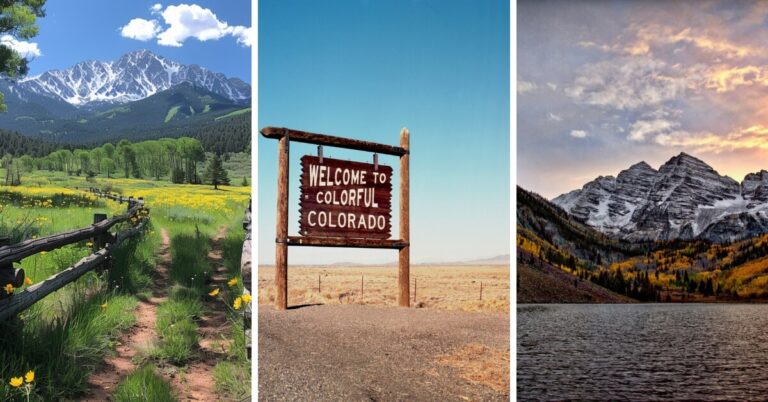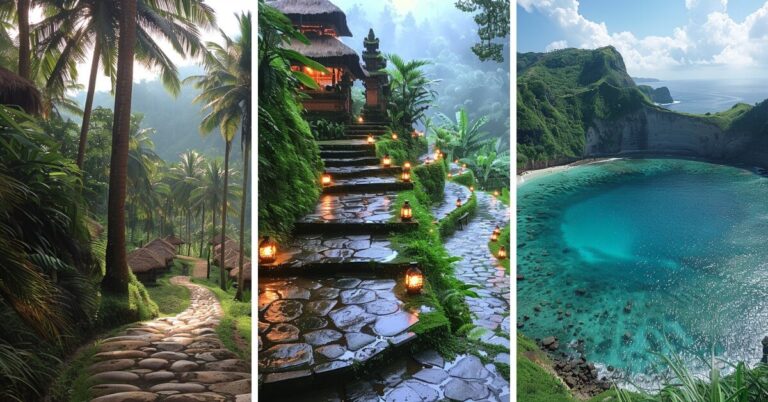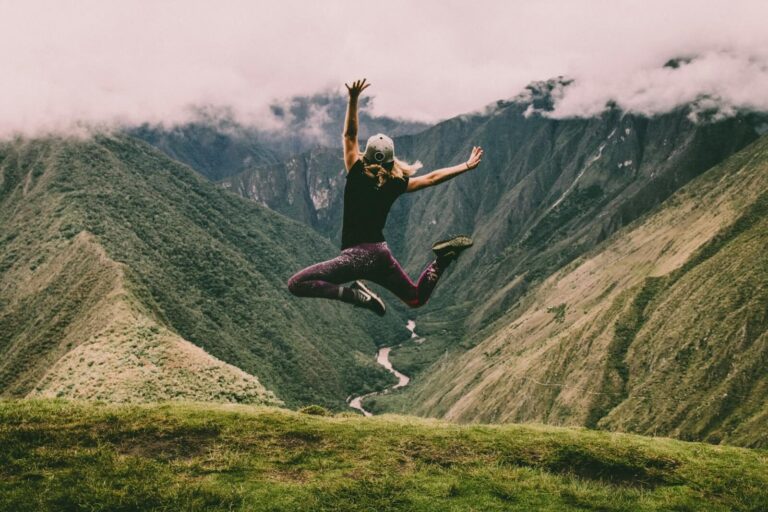Is Chile Safe? The Truth You Need to Know Before Traveling in 2024
Nestled between the Andes Mountains and the Pacific Ocean, Chile boasts a diverse landscape that ranges from arid deserts to lush forests.
With its vibrant culture, delicious cuisine, and stunning natural beauty, Chile beckons travelers from around the world.
Yet, amid the excitement of planning a trip to this South American gem, the question arises: Is Chile safe?
Although media reports often highlight concerns about Chile safety, including petty crime, protests, and natural disasters, rest assured that most of this country is a very safe and welcoming place to visit, ranking 58th on the Global Peace Index in 2023.
Having explored Chile extensively, I bring firsthand experience and intimate knowledge to the discussion of safety in the country.
From hiking in the Atacama Desert to exploring the vibrant streets of Santiago, I’ve navigated Chile’s safety considerations while immersing myself in its culture and landscapes.
To fellow travelers considering a journey to Chile, I understand the importance of safety in your travel planning.
That’s why I’ve conducted thorough research and drawn upon my personal experiences to provide you with valuable insights and practical advice for a safe and enjoyable trip to Chile.
Join me as we delve into the realities of safety in Chile and uncover the truths behind the headlines.
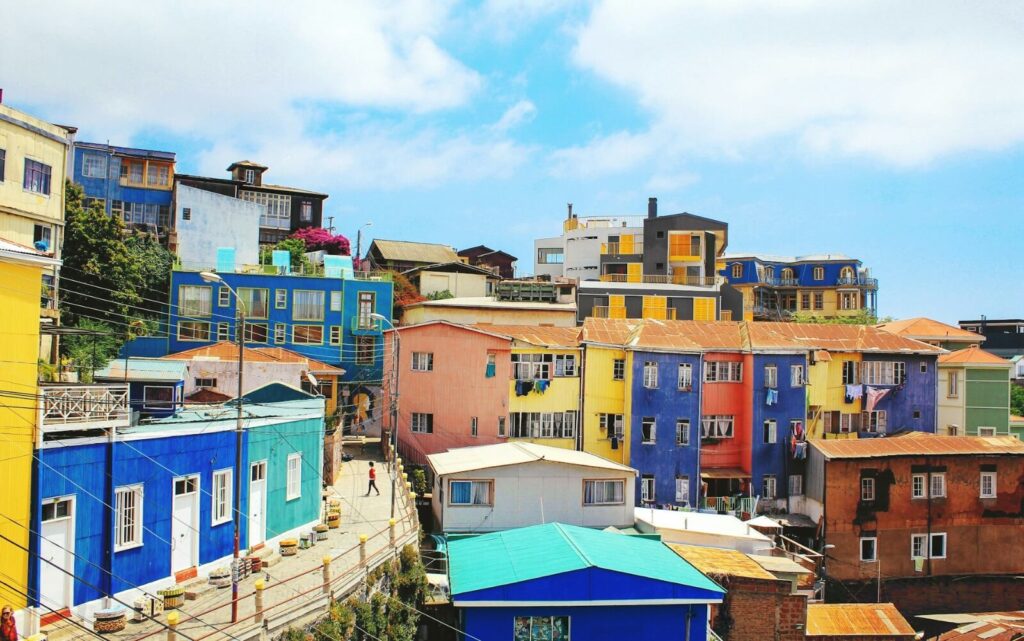
Chile’s Safety Overview
As you embark on your journey, it’s essential to understand Chile’s reputation for safety and the importance of recognizing potential risks.
Chile has long been hailed as one of the safest countries in South America, boasting stable political institutions and relatively low crime rates compared to its neighbors.
Its commitment to security and stability has made it a favored destination for travelers seeking both adventure and peace of mind.
However, like any destination, Chile is not without its challenges.
From occasional protests to the risk of natural disasters such as earthquakes and volcanic eruptions.
It’s crucial to be aware of potential risks and take necessary precautions to ensure your safety while exploring this beautiful country.
Political Tensions in Chile
Currently, Chile is experiencing a period of political change and social unrest, which could potentially impact travelers.
In recent years, Chile has witnessed widespread protests and demonstrations.
Fueled by issues such as inequality, education reform, and indigenous rights.
While these protests are typically peaceful.
They may lead to disruptions in transportation, road closures, and temporary closures of tourist attractions.
As a traveler, it’s essential to stay informed about any ongoing protests or demonstrations and to exercise caution in areas where large gatherings are taking place.
Keep an eye on local news sources, consult with hotel staff or tour operators, and consider adjusting your itinerary if necessary to avoid potential areas of unrest.
While political tensions may add an element of uncertainty to your journey.
They also offer an opportunity to engage with local communities and gain a deeper understanding of Chile’s social and political landscape.
Any Natural Disasters to be aware of in Chile?
As you prepare for your adventure in Chile, it’s essential to be aware of the country’s susceptibility to natural disasters.
Situated along the Pacific Ring of Fire, Chile is prone to earthquakes, volcanic activity, and tsunamis.
Which can occur with little warning and have the potential to disrupt travel plans and pose safety risks.
Earthquakes are a common occurrence in Chile, and while many are minor, the country has experienced devastating quakes in the past.
It’s crucial to familiarize yourself with earthquake safety procedures.
Such as “Drop, Cover, and Hold On,” and to know how to access emergency services in the event of an earthquake.
Chile is also home to several active volcanoes, which have the potential to erupt at any time.
Before traveling to volcanic regions, it’s important to check for any alerts or advisories issued by local authorities and to heed evacuation orders if necessary.
In addition to earthquakes and volcanic activity, Chile is at risk of tsunamis, especially along its lengthy coastline.
If you’re visiting coastal areas, familiarize yourself with tsunami evacuation routes and have a plan in place in case of an emergency.
Wildlife Hazards in Chile?
From encounters with marine life along the coast to interactions with insects and other wildlife in the wilderness.
Being prepared and aware can help ensure a safe and enjoyable experience.
Along Chile’s extensive coastline, you may encounter various marine creatures, including jellyfish, stingrays, and even sharks.
While the likelihood of encountering dangerous marine life is relatively low.
It’s wise to exercise caution when swimming or snorkeling in unfamiliar waters.
Be aware of any warning signs posted at beaches and heed the advice of locals regarding safe swimming areas.
In the wilderness areas of Chile, you may encounter insects such as mosquitoes, ticks, and spiders.
Some of which may carry diseases or deliver painful bites.
To minimize the risk of insect bites, wear long sleeves and pants.
Use insect repellent containing DEET or picaridin, and avoid areas with dense vegetation or stagnant water.
Additionally, Chile is home to a variety of wildlife, including pumas, foxes, and native bird species.
While sightings of large predators are rare, it’s important to take precautions when hiking or camping in remote areas.
Store food securely to avoid attracting wildlife, and make noise while hiking to alert animals to your presence.
And familiarize yourself with how to respond in the unlikely event of a wildlife encounter.
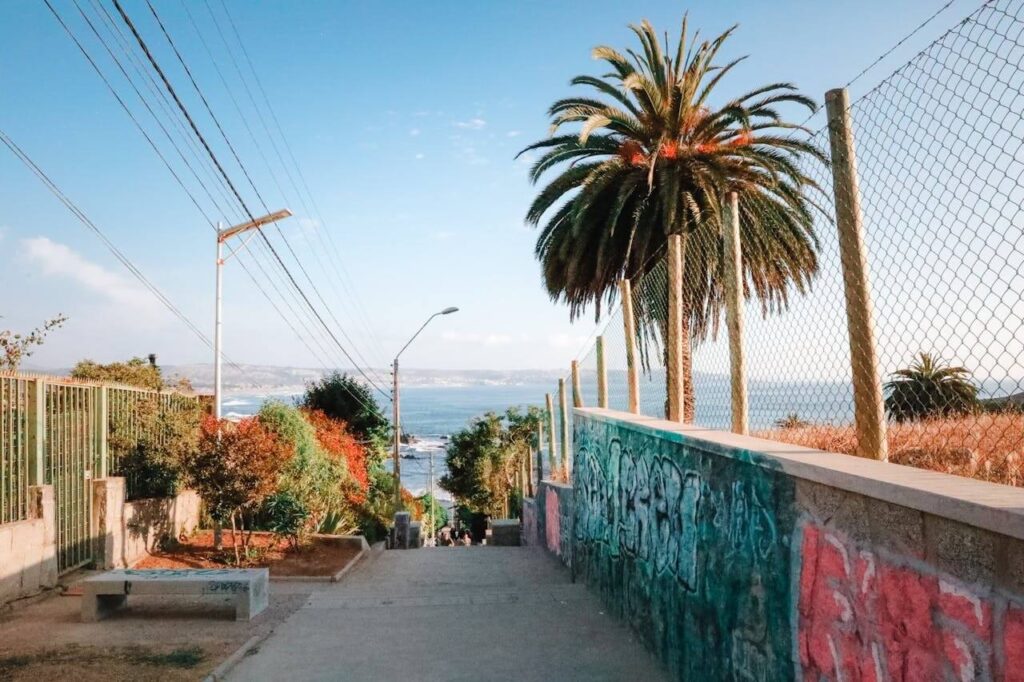
Understanding Safety Essentials Before Your Journey to Chile
Before you embark on your journey to Chile here are some basic safety essentials you should consider doing for safe and risk-free travel:
Learn Basic Spanish:
While English is spoken in some tourist areas, having a grasp of the local language can greatly enhance your travel experience and facilitate communication with locals.
Start by familiarizing yourself with essential phrases such as greetings (hello, goodbye, thank you), asking for directions, ordering food, and seeking help in emergencies.
Even simple phrases can go a long way in breaking the ice and making connections with the people you meet along the way.
Consider investing in a phrasebook or downloading a language app to practice pronunciation and expand your vocabulary.
Don’t worry about mastering the language perfectly; the effort you put into learning and attempting to communicate in Spanish will be appreciated by locals and enrich your cultural experience.
By learning basic Spanish phrases before your journey, you’ll not only feel more confident navigating Chile’s streets and markets, but also gain a deeper appreciation for the country’s rich culture and heritage.
Pack Smart:
As you prepare to pack for your adventure in Chile, it’s essential to pack smart and be prepared for variable climates.
Chile’s diverse landscapes encompass everything from desert terrain to snow-capped mountains.
So having the right clothing and essentials on hand is key to staying comfortable and safe.
Start by considering the activities you’ll be engaging in and the regions you’ll be visiting.
Layers are your best friend when it comes to packing for Chile.
Temperatures can vary significantly throughout the day and from one region to another.
Opt for lightweight, breathable fabrics that can be easily layered to adjust to changing weather conditions.
Be sure to pack essentials such as a sturdy pair of hiking boots, a lightweight waterproof jacket, a hat and sunglasses for sun protection, and plenty of sunscreen.
Don’t forget to pack a refillable water bottle to stay hydrated while exploring Chile’s beautiful landscapes.
In addition to clothing and gear, consider packing essentials such as a basic first aid kit, a portable charger for your electronic devices, and any necessary medications.
It’s also a good idea to have copies of important documents such as your passport and travel insurance policy stored securely in your luggage.
Tech-Savvy Travel:
As you embark on your journey to Chile, embracing technology can greatly enhance your travel experience.
One essential tool to have in your arsenal is WhatsApp.
This messaging app is widely used in Chile for communication.
Making it easy to stay in touch with locals, connect with fellow travelers, and coordinate plans with friends and family back home.
Whether you need to arrange transportation, make reservations at a restaurant, or simply keep in touch with your travel companions.
Having WhatsApp on your phone will streamline communication and make your trip more enjoyable.
Cultural Nuances:
In addition to embracing technology, immersing yourself in Chilean culture is key to having an authentic travel experience.
One cultural custom to embrace is the tradition of late dining and the concept of the ‘sobremesa.’
In Chile, meals are often enjoyed leisurely, with dinner typically eaten later in the evening compared to some other cultures.
The ‘sobremesa’ refers to the time spent lingering at the table after a meal, enjoying conversation, and digesting the delicious food.
Embracing these customs will not only allow you to savor the flavors of Chilean cuisine but also connect with locals and gain insight into their way of life.
As you navigate daily life in Chile, it’s important to be aware of local customs and practices, including queue culture and currency practices.
In Chile, queuing is taken seriously, with locals adhering to a first-come-first-served mentality.
Be prepared to wait patiently in line, whether you’re at a grocery store, bank, or bus stop.
Additionally, familiarize yourself with Chile’s currency, the Chilean peso, and have small bills handy for transactions.
While credit cards are widely accepted in urban areas, cash is still king in many establishments, especially in more rural or remote areas.
Respecting Local Norms:
As you delve deeper into your Chilean adventure, it’s essential to respect local norms and cultural sensitivities to ensure a smooth and enjoyable journey.
One aspect of Chilean culture to be mindful of is greeting etiquette.
In Chile, a warm handshake or a kiss on the cheek is a common way to greet friends and acquaintances.
However, it’s important to let locals take the lead and follow their cues when it comes to greetings, especially when meeting someone for the first time.
By respecting local customs, you’ll show courtesy and consideration for the people you encounter along your journey.
Stay Informed:
Another crucial aspect of staying safe and informed in Chile is staying up-to-date on current events and potential risks.
Before venturing out each day, take a moment to check for any protests or demonstrations that may be taking place in the area.
While protests in Chile are generally peaceful, they can lead to road closures and disruptions in public transportation.
So it’s wise to plan your route accordingly and avoid potentially risky areas if possible.
By staying informed and exercising caution, you’ll be better equipped to navigate any challenges that may arise during your travels.
Water and Natural Phenomena:
As you explore the natural beauty of Chile, it’s important to ensure access to safe tap water and be prepared for natural phenomena such as earthquakes.
While tap water in urban areas is generally safe to drink.
It’s a good idea to carry a reusable water bottle and refill it with filtered or bottled water when necessary, especially in more remote or rural areas.
Additionally, familiarize yourself with earthquake preparedness measures.
Such as identifying safe areas to take cover and knowing how to access emergency services in the event of a quake.
By staying hydrated and prepared for natural phenomena, you’ll be able to fully enjoy the wonders of Chile’s landscapes while prioritizing your safety and well-being.
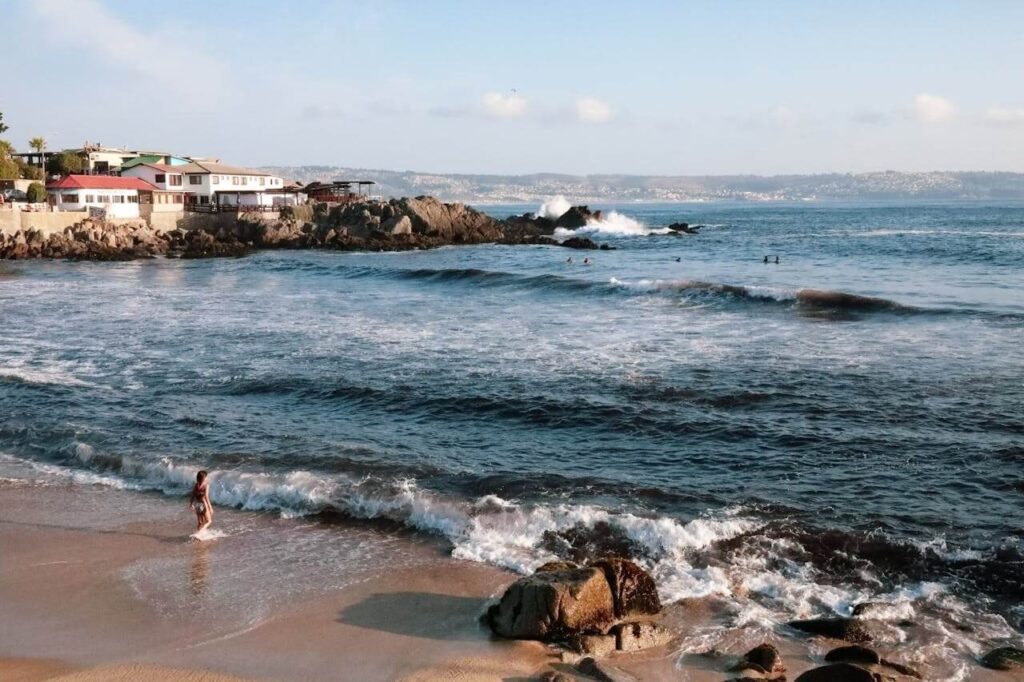
Addressing Common Safety Concerns
As you prepare for your journey to Chile, it’s natural to have safety concerns.
Especially if you’re traveling solo, identify as female, or are part of the LGBTQ+ community.
Let’s address some common questions and concerns to help put your mind at ease:
Is Chile safe for solo travelers, females, and LGBTQ+ individuals?
Chile is generally considered a safe destination for travelers, including solo travelers, females, and LGBTQ+ individuals.
However, it’s essential to exercise the same caution and common sense that you would in any unfamiliar destination.
Avoid walking alone at night in poorly lit or isolated areas, keep your belongings secure, and trust your instincts if a situation feels uncomfortable.
While incidents of crime targeting tourists are rare, it’s always wise to stay vigilant and aware of your surroundings.
What are the common safety concerns for tourists?
Common safety concerns for tourists in Chile include petty theft, such as pickpocketing and bag snatching, particularly in crowded tourist areas or on public transportation.
It’s important to keep your belongings secure and be mindful of your surroundings at all times.
Additionally, be cautious when using ATMs and avoid displaying large sums of cash or valuable items in public.
While violent crime against tourists is rare, it’s essential to stay informed about any potential risks and take necessary precautions to ensure your safety.
How safe is it to walk around Santiago and other urban areas?
Santiago and other urban areas in Chile are generally safe for pedestrians during the day, especially in well-populated and tourist-friendly areas.
However, it’s advisable to exercise caution when walking alone at night, particularly in quieter or less well-lit areas.
Stick to well-traveled routes, avoid walking alone in deserted areas, and consider using taxis or rideshare services after dark for added safety.
By staying aware and taking basic precautions, you can enjoy exploring Chile’s vibrant cities with confidence and peace of mind.

Managing Safety Risks
As you embark on your adventure in Chile, it’s important to manage potential safety risks to ensure a smooth and enjoyable journey.
Let’s explore some key considerations for managing safety risks:
Crime and Theft:
Chile, like any destination, has its share of petty theft and opportunistic crime.
To safeguard your valuables and belongings, consider using a money belt or hidden pouch.
To store your passport, credit cards, and other important documents securely.
Keep a close eye on your belongings in crowded areas and be cautious when using ATMs.
Avoid displaying expensive items such as cameras or jewelry in public, and be vigilant of your surroundings at all times.
Protests:
Chile has experienced periodic protests and demonstrations in recent years, often centered around social or political issues.
While these protests are typically peaceful, they can lead to disruptions in transportation and temporary closures of tourist attractions.
To avoid potential disruptions, stay informed about any planned protests or demonstrations by checking local news sources and travel advisories.
Consider adjusting your itinerary or avoiding areas where protests are taking place if necessary.
Natural Disasters:
Chile is prone to natural disasters such as earthquakes, volcanic eruptions, and tsunamis due to its location along the Pacific Ring of Fire.
To prepare for potential natural disasters, familiarize yourself with emergency procedures and evacuation routes at your accommodation and any tourist sites you plan to visit.
Keep a small emergency kit with essentials such as water, non-perishable food, a flashlight, and a first-aid kit.
Stay informed about any alerts or advisories issued by local authorities and follow their instructions in the event of an emergency.
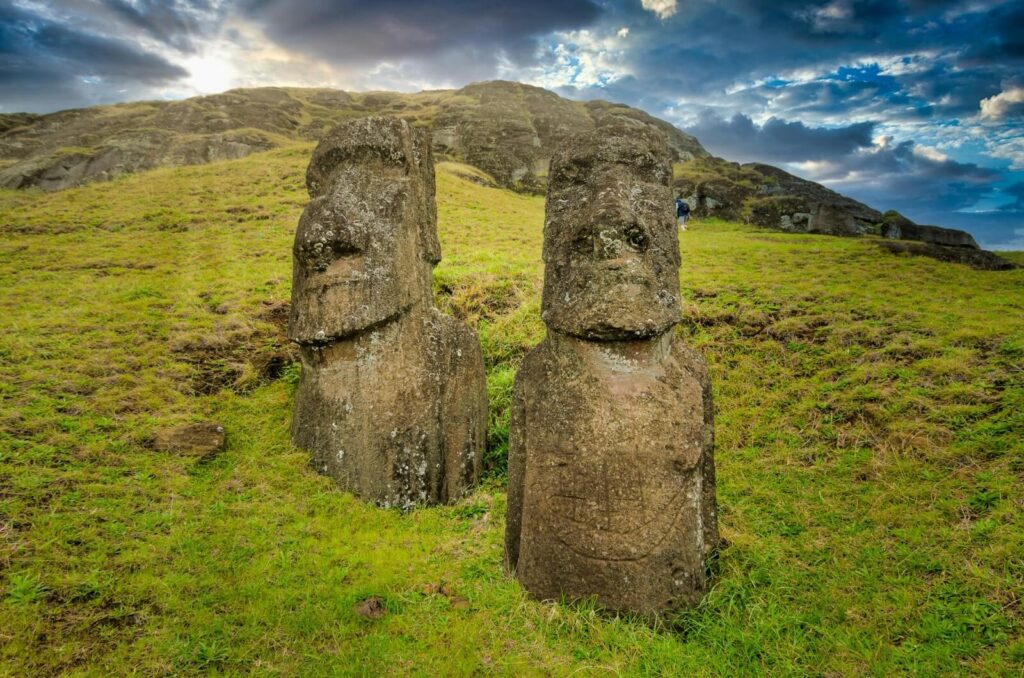
Discovering Chile’s Safest Destinations
As you plan your itinerary for exploring Chile, it’s helpful to know about some of the safest and most captivating destinations the country has to offer.
Let’s take a closer look at some of Chile’s safest destinations across various categories:
Urban Centers:
1. Santiago: Dive into the heart of Chile’s vibrant capital city.
Where safe neighborhoods like Providencia and Las Condes offer a blend of cultural attractions, dining experiences, and shopping opportunities.
Explore historic landmarks such as Plaza de Armas and the vibrant street art scene in neighborhoods like Bellavista.
2. Valparaíso and Viña del Mar: Experience the coastal charm of Valparaíso’s colorful hillside neighborhoods and Viña del Mar’s pristine beaches.
Wander through Valparaíso’s UNESCO-listed historic quarter, ride the funiculars for stunning views, and relax on Viña del Mar’s golden sands.
Natural Wonders:
1. Atacama Desert and Northern Chile: Embark on adventures in the Atacama Desert.
The driest desert in the world, where safe tourism infrastructure allows you to explore otherworldly landscapes, geysers, and salt flats.
Discover the astronomical wonders of the Atacama’s clear night skies and visit charming towns like San Pedro de Atacama.
2. Patagonia: Lose yourself in the pristine wilderness of Patagonia.
Where safe hiking trails and guided excursions lead you through awe-inspiring landscapes of glaciers, fjords, and mountains.
Explore Torres del Paine National Park for iconic trekking experiences and encounter diverse wildlife in their natural habitats.
Unique Experiences:
1. Rapa Nui (Easter Island): Unravel ancient mysteries and immerse yourself in Polynesian culture on the remote island of Rapa Nui.
Visit the iconic moai statues, explore archaeological sites, and soak in the island’s serene beauty.
2. Puerto Varas and Los Lagos: Indulge in lakeside tranquility and outdoor adventures in Chile’s Lake District.
Enjoy activities such as kayaking, hiking, and fishing amidst the breathtaking scenery of volcanoes, lakes, and forests.
Off-the-Beaten-Path:
1. Chiloé Island: Delve into folklore and coastal beauty on Chiloé Island, where safe exploration opportunities abound.
Discover charming wooden churches, picturesque fishing villages, and unique traditions such as the Chiloé cuisine and mythology.
2. Pucón: Get your adrenaline pumping with adrenaline-fueled escapades in Chile’s Lake District.
Experience activities like whitewater rafting, zip-lining, and hiking amidst the stunning natural landscapes of lakes, rivers, and forests.
Road Trip Adventures:
Embark on a road trip adventure through Chile’s diverse landscapes, from the arid deserts of the north to the lush forests of the south.
With well-maintained roads and safe driving conditions, you can explore at your own pace and discover hidden gems along the way.
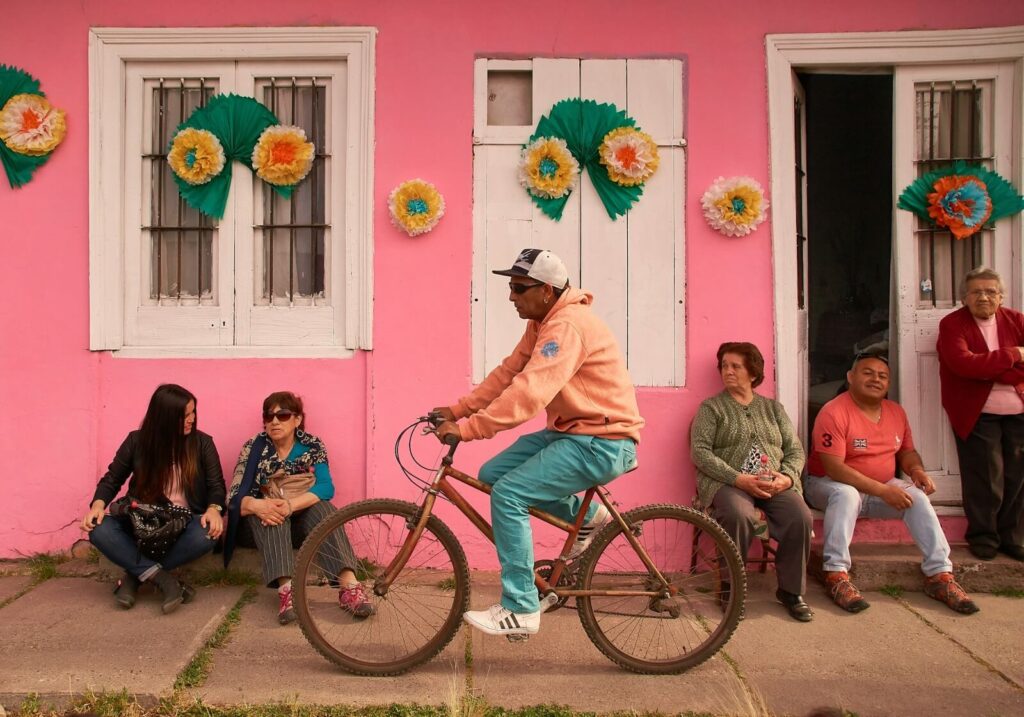
CONCLUSION: Is Chile Safe?
As you prepare to embark on your journey through Chile, it’s important to navigate the country’s safe terrain with confidence and preparedness.
By prioritizing preparation, cultural understanding, and local insight, you can ensure a smooth and enjoyable experience exploring all that Chile has to offer.
Whether you’re savoring the flavors of Chilean cuisine, exploring ancient archaeological sites, or trekking through pristine wilderness.
Approach each experience with curiosity and respect for the people and places you encounter along the way.
With the right approach and mindset, Chile welcomes solo adventurers with open arms.
Offering a wealth of opportunities for unforgettable experiences and meaningful connections.
So, pack your bags, embark on your journey with confidence, and prepare to create memories.
That will last a lifetime in this beautiful and welcoming country.
Also, find Is Argentina Safe for Solo Travelers?


